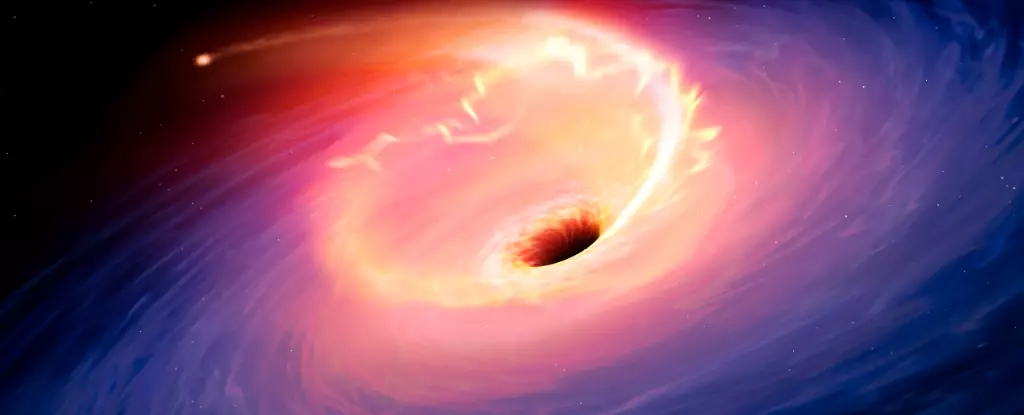Black holes are known for their destructive nature towards stars that come too close to them. However, in rare instances, a star may survive the encounter and be pulled into an orbit around the black hole. This unique occurrence leads to a much slower and drawn-out death for the star, providing valuable insights into various physical processes.
A recent study utilizing X-ray data from the Chandra observatory and other instruments has shed light on a supermassive black hole at the center of a distant galaxy. This black hole has captured a star in its orbit, slowly devouring it over time. The continuous monitoring of this event has provided astronomers with valuable information about the dynamics of such interactions.
The initial detection of this phenomenon, known as a “tidal disruption event” (TDE), occurred in 2018 with the discovery of AT2018fyk. NASA’s Neutron star Interior Composition Explorer (NICER) was the first to capture this event, followed by further observations from telescopes like Chandra and XMM-Newton. These instruments allowed astronomers to track the evolution of the star’s interaction with the black hole over a considerable distance of 860 million light-years.
The most intriguing aspect of this case was the unexpected rise in X-ray and UV emissions from the black hole two years after the initial event. This spike in luminosity indicated that the star, captured in a highly elliptical orbit, was being partially devoured again by the black hole. Scientists were able to predict the end of this tidal disruption event, leading to significant observations on August 14th, 2023, confirming a decrease in emissions from the black hole.
Researchers speculate that the star at the center of AT2018fyk was originally part of a binary star system, with its companion being ejected once they entered the black hole’s gravitational pull. The surviving star continues to lose mass with each interaction, potentially leading to future instances of increased luminosity. The system’s characteristics suggest a possible third event between May and August of 2025, offering opportunities for further observational studies.
The unique case of a star orbiting a black hole presents researchers with valuable insights into rare events like tidal disruption events. The continuous monitoring of this system and its predicted future occurrences offer a chance to test theoretical models and expand our understanding of the interactions between stars and black holes in distant galaxies. The research team anticipates additional observational opportunities to unravel the mysteries of this captivating celestial dance.


Leave a Reply